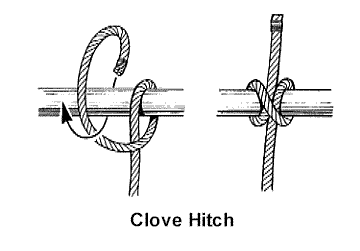Tying up the boat is one of those tasks that many new boaters don’t think about, but quickly becomes important once you get to the dock. You may have never learned how to do it the right way, and you don’t want to leave the dock without the boat being tied up properly.
Those knots you’ve been using may have worked up until now, but it’s time to make sure you’ve got the right method and that your boat is actually going to be secured at dock. Take a look at the best knots to use and try to learn as many as you can for your weekends on the boat.
The clove hitch
The first example of a great knot method for tying up your boat would be to use the clove hitch. This is a common and excellent knot for boaters to learn that doesn’t take long to learn. Simply go around the object once before making a second turn in the same direction. You’ll cross over the first one when you go the second time, but on the second time you will then tuck the free end through the eye.
The cleat hitch
With a similar name as the first method, the cleat hitch is another way to go about docking the boat. If you walked the docks before and noticed the knots, you’ve likely seen this one when it’s been done wrong. It’s one of those knots where people tend to leave a tangled mess from too much line or they’ll have an insufficient loop that falls apart. Don’t lose your boat or your dinghy from a poor cleat hitch.
To do a cleat hitch, you’ll be making three turns around the cleat’s horn, not to be done any fewer or any more times than that. Pass your line once around the base of the cleat completely going under the horns and then once you’ve done that one time, you’ll cross over the opposite horn. The last step would be to turn the line under itself making a half hitch.
The reason that this often goes wrong is that people will try to do extra layers on the turns that re-crosses over the cleat but the extra turns doesn’t help and only makes it harder to untie.
The bowline knot
Try a bowline knot for another popular knot option. This one requires you to make a loop in the line before feeding the end up through the loop. Then you’ll feed it around the lower part of the line and back through the loop, pulling your ends tight to make sure there is no give.
Whether you are trying to hitch up, tying a line to something else, bending where you tie a line to another, or making a knot where your line is tied to itself, you should understand the differences and learn a little bit of everything. Keep your knots simple and clean following the instructions carefully. It may make a big difference in your boat’s security when you dock.



